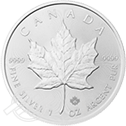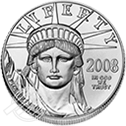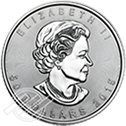Stocks vs. Precious Metals: Pros & Cons
Sometimes opposites attract.
Sonny and Cher. Martin and Lewis. Peanut butter and jelly.
Sometimes we need a little help from a friend to fill the gaps and complete the mission.
Deciding between an investment in stocks vs. precious metals may be a similar scenario.
The two are complete opposites, but they can be great complements. Owning precious metals in tandem with stocks may be just the pairing to help you achieve your investment goals.
We will look at both assets to get a better understanding of what they are, how you invest in them, and their strengths and weaknesses.
Ultimately, we’ll see if this odd couple can peacefully coexist—or even thrive—in your investment portfolio.
What Are Precious Metals?
Precious metals are rare elemental metals with high industrial and economic value.
Since the times of ancient civilizations, people have valued precious metals for their beauty, scarcity, and industrial and practical uses.
Precious metals are malleable, conductive, and non-corrosive. For centuries, societies have used them in coinage and currency. The finest jewelry and adornments are fashioned from precious metals.
There are eight precious metals. The four most widely known and used are the “primary metals.” They are:
Each is unique and has different uses.
Outside of jewelry and industry, investors own physical precious metals to anchor their portfolios.
Investors acquire physical gold, silver, platinum, and palladium in two ways:
- Precious metals IRA
- Direct delivery
There are two ways to own precious metals in an individual retirement account:
- If you are 59 ½ and own a 401(k), or if you own a 401(k) from a previous job, you may roll over that 401(k) to a precious metal IRA—also known as a Gold IRA or Silver IRA.
- If you already own an IRA, you can simply transfer it to a Gold IRA.
Both the gold IRA rollover and the IRA transfer are tax-free and penalty-free.
The Gold and Silver IRA function just like a typical IRA but give you the option of owning physical assets—such as gold, silver, platinum, and palladium bars and coins—within the plan.
IRA-eligible bars and coins are among the finest in the world. They must meet IRS standards for purity, origin, and condition. For example, metals must be stored in an approved depository.
All aspects of metals ownership are included in the self-directed IRA.
Direct delivery buyers (cash buyers) have the benefit of choosing any available bars and coins. There are no eligibility rules or restrictions. If a coin or bar is available and within your budget, you can have it directly delivered to your doorstep.
Direct delivery is easy. You choose what metals you want. Your account executive helps locate the pieces and sells them to you. Your assets are then insured and shipped to you.
It’s that simple.
What Are Stocks?
Stocks are a type of security that gives the holder a share of ownership in a company.
Companies sell stock to raise money and fund operations.
Investors buy shares of a company. The share—or unit of ownership— entitles the stockholder to a portion of the company’s assets and earnings.
Some companies issue different types of stock. The type of stock you invest in determines your dividend participation, your voting rights, and whether or when you may recoup your investment if the company goes bankrupt.
The two most common types are:
- Common stock
- Preferred stock
Common stockholders receive dividends—a sum of money paid quarterly out of profits or reserves—if a company chooses to pay them. Dividend payments are at the discretion of the company and determined by the company’s needs.
Shareholders of common stock also get voting rights—typically one vote per share—at shareholder meetings.
Preferred stockholders have the right to receive dividends before common stockholders but retain no shareholder voting rights.
When a company performs well, its stock price increases and your shares increase in value.
Investors typically buy stock and hold it over a long period of time.
Stocks are speculative, and there are no guarantees in stock investing. Stock prices sometimes decline. If a company loses most or all its value, its stock becomes worthless. And your investment becomes worthless, meaning you lose your invested funds.
We have seen stalwart companies that have existed for decades hit turbulent times. We have witnessed companies become insolvent, their stocks turn worthless, and investors left with nothing but pieces of paper.
Pros and Cons of Investing in Precious Metals vs. Stocks
There is no perfect investment. When choosing between precious metals vs. stocks, it is important to understand what can accelerate your portfolio’s success and what can doom it to failure.
Investing in Stocks: Advantages and Drawbacks
Investors are drawn to stocks because of the following advantages:
- Dividends. You can take dividends as extra income or reinvest them to purchase more shares of a stock.
- Liquidity. Stocks are very liquid. You can buy or sell them—at a transparent price—with a push of a button.
- Long-term growth. Stocks typically return higher yields than other speculative investments over the long term.
Some potential pitfalls associated with stock investing are:
- Volatility. Stock prices can have precipitous rises and collapses. They can be erratic and affected by a company’s policies and procedures, not just the quality of a product.
- Taxes. Accounting for gains and losses from stock investing can be complicated. It often takes paying a professional to mitigate losses and navigate tax consequences from gains.
- Last in line. In case of a company’s catastrophic failure, stockholders are the last to recoup their investment. They must wait for creditors, employees, and suppliers to get paid before any owners of the company receive any funds.
Investing in Precious Metals: Advantages and Drawbacks
Precious metals offer benefits that paper-based assets do not:
- Diversification. Precious metals exist as a different asset class. They are non-correlated to the stock market and typically move opposite the market. When stock prices decrease, metal prices often increase. And vice versa. Precious metals give balance.
- Inflation hedge. As money printing dilutes the dollar’s worth, inflation takes hold and drives up prices. Consequently, it may take more dollars today than yesterday to purchase goods and services. Precious metals are priced in dollars, which helps retain their value. Because their price increases alongside other goods, it therefore takes more dollars to buy precious metals. That means more money for you when it comes time to sell.
- Tangible asset. Precious metals are real and tangible—you can hold them in your hand. They have been around nearly as long as the Earth. Some have had value since the earliest civilizations, and they will probably always have value.
The drawbacks of investing in precious metals include:
- No interest or dividend. Bars and coins do not generate interest or pay a dividend. Their value is rooted in supply and demand, which geopolitical and economic factors can affect.
- Costs. Precious metals have built-in acquisition and maintenance costs. There are fees to establish and maintain an IRA. Like any other product, precious metals sell at a profit. Direct-delivery owners may encounter fees when storing, insuring, and securing their metals.
- Early withdrawal penalties. Gold IRA owners must abide by the rules of the IRS. With few exceptions, funds must remain in the plan until you turn 59 ½. Unapproved early withdrawals are assessed a penalty and taxed as ordinary income.
Choosing Between Precious Metals and Stocks
The decision of investing in precious metals vs. stocks boils down to having a thorough understanding of where you are and where you want to be as an investor.
Here are a few key steps to consider taking as you weigh your decision.
Assess Your Financial Goals
Know what you want your financial future to look like. Be realistic and reasonable, but be aspirational. Plan for the long term, and get there by stringing together your short-term accomplishments.
Determine How Diverse Your Portfolio Is
What do you own in your portfolio? Is it filled with different stocks? If not (and possibly even if so), you may need to diversify.
Even if you own different stocks, all from different sectors of the market, they are still all stocks. They are all susceptible to the same general market conditions.
Consider owning physical metals in your portfolio to add a tangible, non-correlated asset.
Consider Market Trends
Timing is everything.
In the internet age, we have great access to information. Use it. A well-informed investor may get in early and ride the wave upward longer.
Conversely, information may indicate that it’s time to liquidate a position and move into a counter position.
Be informed. Stay fluid.
Get Started with Investing
Your first step should be researching and finding reputable stockbrokers and precious metals dealers.
The stockbroker landscape is filled with names we’ve heard through commercials for decades. Find one whose investment theory aligns with yours. Check their pricing and commissions. If you choose a personal broker, make sure to assess their bedside manner and ask questions.
Your precious metals should come from a highly reputable gold IRA company like Advantage Gold.
We are the highest-rated precious metals dealer and have thousands of five-star reviews online for you to read. We welcome you to do so and see what our clients have to say about their gold-buying experiences.
Diversify your thinking by understanding what investment options are available to you. It might be time to think outside the box and try something new.
Finally, create an investment plan that you can stick to and that has a reasonable chance for success. Take baby steps until you’re adept enough to run.
Should You Invest in Precious Metals or Stocks?
Choosing between stocks vs. precious metals doesn’t have to be binary. A balanced portfolio has room for both.
We have seen how, when owned in tandem, the different asset classes can fill the voids the other leaves behind.
Plot your goals, obtain the tools to achieve them, and stick to your plan.
Call us at Advantage Gold or click the link and we’ll call you. We will take care of the precious metals investing.
It’ll be one fewer thing on your plate. You’ll have peace of mind knowing that you are anchoring your financial foundation with a tangible asset.
Tags: investing in precious metals vs stocks, precious metals vs stocks


